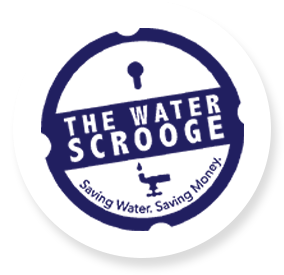4 min read
Should Reducing Water Consumption Be Considered for Carbon Credits?
![]() David Schwartz
May 5, 2023 12:25:10 PM
David Schwartz
May 5, 2023 12:25:10 PM

If you're a landlord or building owner, you're already juggling cost-cutting and green initiatives.
But here's a twist: what if water conservation not only saved money and cut carbon emissions but could also earn you carbon credits? While not traditionally linked to carbon reduction, innovative water-saving methods are changing the game.
This article will explore this unexpected connection, delve into cutting-edge conservation techniques, and see how they could potentially boost your carbon credit balance.
Related: Saving Money and Water with Water Conservation Products for Your Toilet
Understanding Carbon Credits and Their Criteria for Eligibility
If you're scratching your head over the term 'carbon credits,' picture them as Wall Street for the eco-minded. They're incentives for green activities that slash greenhouse gas emissions.
One carbon credit represents the reduction of a metric ton of carbon dioxide equivalent (CO2e) emissions. These credits can be bought and sold, allowing organizations to offset emissions by funding projects that cut them elsewhere.
There are specific rules to snag these credits laid down by heavy hitters like the United Nations Framework Convention on Climate Change (UNFCCC). Typical credit-earning activities include renewable energy ventures, energy-efficient tech, and sustainable land use.
Water conservation hasn't traditionally been linked to carbon emission reduction, but times are changing. So say hello to the SMART VALVE™, The Toilet Scrooge™, and The Shower Scrooge™ - these aren't your standard water-saving tools. Instead, they're pioneering solutions that save water and indirectly cut energy use and greenhouse gas emissions tied to water management.
By introducing these innovative solutions to your property, you might qualify for carbon credits. In addition, thanks to co-benefit programs acknowledging the broad-reaching positive impacts of water conservation, you could find yourself in the green—financially and environmentally.
Click Here to Visit The Water Scrooge Store Now!
The Benefits of Water Conservation for Carbon Reduction
Water conservation is your secret ally in cutting carbon emissions. Think about it - the energy needed to pump water from a treatment plant to your building, heat it, and distribute it through a network of pipes is substantial.
Now, imagine if we use less water. Using less water means less water to pump, treat, and heat, equating to less energy used and fewer carbon emissions.
But the benefits of water conservation continue beyond energy savings. It could also give your carbon credits a nice boost. Remember those co-benefit programs I mentioned? They might reward you with carbon credits if you employ innovative water-saving solutions.
These clever solutions conserve water and indirectly reduce energy use and greenhouse gas emissions tied to water management. While doing your bit for Mother Earth, you could also add to your carbon credit stash.
The Potential of Innovative Water Conservation Solutions for Carbon Credits
These forward-thinking water conservation tactics stand a real chance of earning carbon credits. Co-benefit programs, which recognize and reward water conservation's broader environmental and social impacts, are giving them the green light.
These tactics help us be more water-wise and cleverly reduce energy use and greenhouse gas emissions associated with water management.
Co-benefit programs are broader in their vision - they're not just about slashing carbon emissions. They also celebrate the ripple effect of environmental and societal benefits from such activities. For example, actions that reduce emissions and carry additional perks like water conservation will likely earn brownie points through carbon credits.
Take the Verified Carbon Standard (VCS), for instance. This Water Benefit Standard allows organizations to accumulate credits for water stewardship initiatives that provide bonus societal and environmental benefits, not just emission reductions.
While these innovative water conservation strategies may not meet traditional criteria for carbon credits, they have a strong shot at earning credits through these co-benefit programs. That's significant, considering water conservation is crucial in our arsenal to reduce carbon emissions and foster sustainability.
Compared to other carbon credit-qualifying activities, these cutting-edge water conservation solutions offer a unique opportunity to address water conservation and carbon reduction simultaneously.
So, by embracing these solutions, landlords and building owners are doing more than just managing your utility bills. You're also stepping up to the plate in the battle against climate change.
Related: The Benefits of Using Water Conservation Products in Your Shower
Innovative Solutions for Water Conservation and Carbon Reduction
The SMART VALVE™, The Toilet Scrooge™, and The Shower Scrooge™ are revolutionizing the field of water conservation. These aren't your typical water-saving devices. Instead, they are next-gen tools designed to increase water efficiency, minimize wastage, save you some cash, and, ultimately, help preserve our planet.
- Let's take a closer look. The SMART VALVE is a precision-engineered device that compresses air before reaching your water meter. This compression means less air, and more water, leading to a reduction in water bills by a solid 15%-20%. The SMART VALVE™ indirectly curtails energy use and greenhouse gas emissions tied to water management.
- Then, there's The Toilet Scrooge. This intelligent device controls water flow to your toilet, allowing water to run when used only. When it's not, the valve closes, preventing wasteful leaks. By doing so, The Toilet Scrooge™ conserves water and indirectly reduces energy use and emissions linked to water treatment and distribution.
- Lastly, meet The Shower Scrooge, a patented, tamper-proof shower flow regulator that manages water flow during showers. It ensures equal pressure across floors and adjusts for line pressure variations, delivering consistent shower pressure and water conservation.
Compared to conventional water conservation methods like low-flow showerheads or faucet aerators, these innovative solutions hold their ground. But unfortunately, current practices are often tampered with or removed by tenants, causing water usage and waste to skyrocket.
In contrast, The Water Scrooge offers tamper-proof, advanced solutions that simultaneously tackle water conservation and carbon reduction.
Click Here To Learn More About the Water Savings Solution by the Water Scrooge!
Co-Benefit Programs Recognize the Positive Impacts of Reducing Water Consumption
If you're a building owner, you must know that water conservation is more impactful than you might think. Yes, it can reduce utility bills, but its role in reducing carbon emissions and boosting sustainability is equally vital.
Although water-saving efforts aren't usually front and center in most carbon credit programs, innovative co-benefit schemes are changing the narrative, recognizing the broader positive impacts of water conservation.
Enter companies like The Water Scrooge, pioneers in offering long-lasting, dual-purpose solutions. Unlike traditional methods, their products simultaneously tackle water conservation and carbon reduction, offering financial and environmental benefits.
So, as landlords and building owners, it's time to consider the broader implications of water usage. By embracing these innovative solutions and supporting co-benefit programs, you save money and contribute to a more sustainable future.



